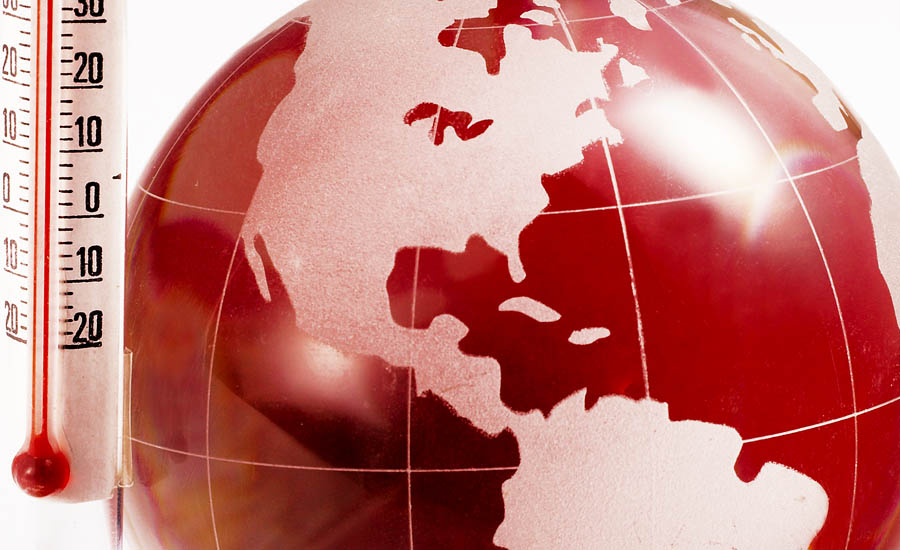On April 4, 2016, the U.S. Global Change Research Program released a new assessment of the growing public health threat of climate change. The report, “The Impacts of Climate Change on Human Health in the United States: A Scientific Assessment,” identified the many ways in which climate change is already threatening the health of all Americans and the significant public health challenges it is expected to create. The health threats covered by the report were identified as increases in human risk related to temperature-related death and illness; air quality impacts; extreme events such as droughts, floods, and wildfires; vector-borne disease; water-related illnesses; food safety, nutrition, and distribution; and mental health and well-being. One key feature of the report was the identification of individuals and groups, including workers, most likely to experience the effects of climate change on their health and well-being.
NIOSH contributed to the development of the report as part of a coordinated effort by more than 100 experts from eight federal agencies with different but complementary roles under this mandate. The impacts that climate change will have on workers were highlighted throughout the report and in a special section describing vulnerable occupational groups.
Workers are vulnerable to health impacts
In addition to the threats that all Americans face, many workers may experience longer or more intense exposures to climate change–related hazards than the general public, making them particularly vulnerable to the health impacts. Watch the news during an extreme weather event, or wildfire, and you will see rescue and response workers moving toward the most hazardous locations at the same time the general public is being evacuated. We saw this most recently, at the time of this writing, with responders rescuing people stranded by rising water in their homes and cars during the terrible floods in Houston. Picture agriculture or construction workers during periods of extreme heat. They may have little control over the location or timing of their work tasks, potentially placing them at higher risk of heat related–illness or injury than people who are free to seek shade at any time. Think also of the working conditions in warehouses and factories without climate control as the area of the country affected by high temperatures continues to expand, or of the maintenance worker in Alaska who finds that higher than usual temperatures mean the ice on the frozen river he usually drives his pick-up truck across isn’t as strong as he thought.
In 2009, at a time when many climate and health reports and activities did not include workers, NIOSH investigators published a framework for identifying how climate change could affect the workplace; workers; and occupational morbidity, mortality, and injury. The framework contributed to greater interest in this issue among researchers and government agencies. An update to the framework, summarizing new research findings, is due to be published later this year. In April last year, I recommended the establishment of a sustained NIOSH Climate Change Initiative. The Initiative is tasked with improving our understanding of the impacts of climate change on worker safety and health and how workers can be protected from this threat. Over the last year the Initiative has led to increased awareness of the problem in the climate change and occupational safety and health communities. Going forward, the Initiative will promote and support the research needed to identify the most vulnerable occupational groups, highest priority hazards, and preventive interventions.
A wide ranging challenge
The health threat from climate change is so wide ranging that no single profession or organization can tackle the issue alone. Collaborative activities such as the U.S. Global Change Research Program are essential in identifying and preventing the health effects of climate change, which do not respect jurisdictional boundaries nor disciplinary distinctions. By continuing to take an active role in these collaborative efforts, NIOSH and other occupational safety and health organizations and professionals will be able to ensure that the specific needs of workers are integrated into climate and health activities and included in conversations about how our nation responds to climate change.
As we continue to investigate exactly what, and how large, the occupational safety and health impacts of climate change will be, we know that climate change is already placing the nation’s workers at risk physically and psychologically. Protecting workers from climate change–related hazards will require employers and occupational safety and health professionals to understand the potential adverse impacts of climate change on specific worker populations and develop plans to keep those workers safe and healthy. A variety of resources that support the development of these plans — covering topics ranging from tick-borne diseases and heat stress to green, safe, and healthy jobs — are available on the NIOSH website. For example, the recently released Criteria for a Recommended Standard: Occupational Exposure to Heat and Hot Environments provides updated guidance on risk management for workers exposed to heat and hot environments. As additional information and evidence becomes available, we will continue to share it widely. Through awareness and research, we can increase our knowledge of climate change and anticipate the impact on workers, effectively respond, and implement effective prevention strategies. Please see our climate change topic page for more information.



